It is difficult to wear false eyelashes made of red fox fur and have almost everyone fail to notice. Jennifer Lopez achieved this feat at the 2001 Academy Awards by combining her ostentatious eyelash couture with a dress that was see-through on top.
Enough people did notice the lashes, however, or at least read the press releases, so that a trend was sparked. Madonna fanned the fires by appearing in photos advertising her 2004 Re-Invention tour wearing mink eyelashes.
False eyelashes -- last popular in the 1960s when tastemakers like Twiggy and Mary Quant made panda eyes (and elfin haircuts) a trademark of Carnaby Street -- are returning to America's makeup bags. Sales of false lashes in drugstores were up 16 percent in the first three months of this year compared with the same period a year earlier, according to the market research group AC Nielsen.
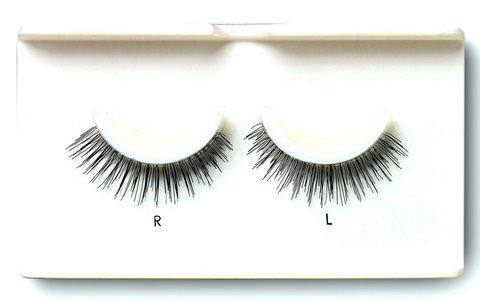
PHOTO: NY TIMES
The craze has produced two "eyelash bars," where for about US$22 a customer can buy a set of lashes (and adhesive) and have them applied. Both are in Shu Uemura boutiques, one in the SoHo branch in Manhattan and one that opened last month in the Fillmore district of San Francisco.
One day last week at the San Francisco bar a young woman who planned to wear faux lashes at her wedding was getting a lesson in how to apply them from Michael Baumann, a makeup artist. Afterward, her eyes looked beautiful and surprisingly natural. She wore Flare Eyelashes: individual clusters of two or three lashes applied here and there, most prominently at the outside edges of the eyes. Flares do for the eyes what the push-up bra does for decolletage. The effect is dramatic but subtle.
I had come for a full set of false lashes, the mink, Madonna-issue kind. (Note of clarification: "Mink eyelashes" are made of individually selected mink hairs that have been harvested by gently brushing live animals. Mink eyelashes are not cruel, just slightly absurd.)
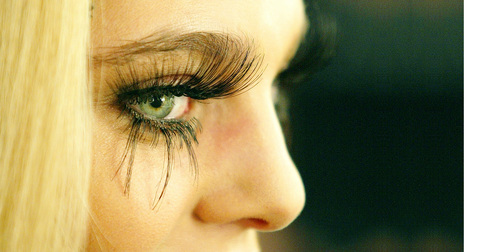
Baumann deftly demonstrated the proper application of the adhesive, placing a drop on the back of his hand and then dipping the tip of a brush handle into the glue. He ran the glue along the seam of the false lashes. You mustn't squeeze the glue onto your eyelid, he said, or you will "have too much glue, and then your eyes are going to stick together."
The National Injury Information Clearinghouse of the US Consumer Product Safety Commission does not track injuries caused by false eyelashes, so it is impossible to know how often this happens. At least one primate, however, has suffered. (See the February 1968 issue of Clinical Pediatrics, Page 107: Gastro-intestinal obstruction by eyelash adhesive in a Wooley monkey.)
It took only 30 seconds for Baumann to position and set the right eyelash. It was lighter than I had expected, but felt clammy and odd. "It's still a little wet, a little tacky," he said, adding that once the glue dried, I would not feel it. But would I still see it? A black spidery thing hovered at the top of my field of vision. Baumann assured me this would go away, and soon it did. A glance in the mirror revealed that I looked, to use Baumann's phrasing, "a little tacky." I headed off to meet two friends for a drink.
"If I'd just met you," my friend Steph said, "I would make a negative character judgment." But in dim light, or from a modest distance, I found the lashes sexy and glam, the sort of look that would work at a nightclub or onstage.
I should add that when I was at the eyelash bar, the entire staff was wearing faux lashes -- albeit subtler ones -- in broad daylight, and none of them looked tacky or overly made-up. They looked gorgeous. Still, if I could buy any one thing in the Shu Uemura boutique, I'd choose their miraculously unclumpy mascara, which requires neither glue nor a stage career to work well.
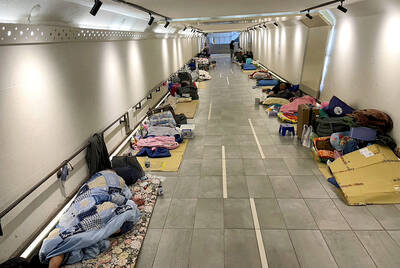
From the last quarter of 2001, research shows that real housing prices nearly tripled (before a 2012 law to enforce housing price registration, researchers tracked a few large real estate firms to estimate housing price behavior). Incomes have not kept pace, though this has not yet led to defaults. Instead, an increasing chunk of household income goes to mortgage payments. This suggests that even if incomes grow, the mortgage squeeze will still make voters feel like their paychecks won’t stretch to cover expenses. The housing price rises in the last two decades are now driving higher rents. The rental market

July 21 to July 27 If the “Taiwan Independence Association” (TIA) incident had happened four years earlier, it probably wouldn’t have caused much of an uproar. But the arrest of four young suspected independence activists in the early hours of May 9, 1991, sparked outrage, with many denouncing it as a return to the White Terror — a time when anyone could be detained for suspected seditious activity. Not only had martial law been lifted in 1987, just days earlier on May 1, the government had abolished the Temporary Provisions Effective During the Period of National Mobilization for Suppression of the Communist
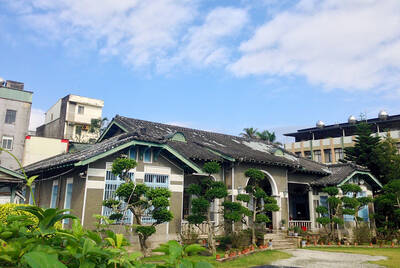
When life gives you trees, make paper. That was one of the first thoughts to cross my mind as I explored what’s now called Chung Hsing Cultural and Creative Park (中興文化創意園區, CHCCP) in Yilan County’s Wujie Township (五結). Northeast Taiwan boasts an abundance of forest resources. Yilan County is home to both Taipingshan National Forest Recreation Area (太平山國家森林遊樂區) — by far the largest reserve of its kind in the country — and Makauy Ecological Park (馬告生態園區, see “Towering trees and a tranquil lake” in the May 13, 2022 edition of this newspaper). So it was inevitable that industrial-scale paper making would
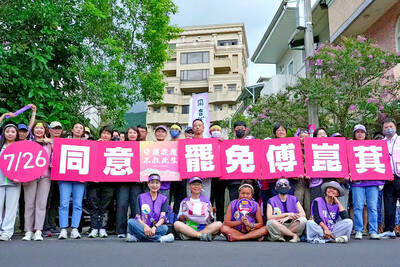
Hualien lawmaker Fu Kun-chi (傅?萁) is the prime target of the recall campaigns. They want to bring him and everything he represents crashing down. This is an existential test for Fu and a critical symbolic test for the campaigners. It is also a crucial test for both the Chinese Nationalist Party (KMT) and a personal one for party Chairman Eric Chu (朱立倫). Why is Fu such a lightning rod? LOCAL LORD At the dawn of the 2020s, Fu, running as an independent candidate, beat incumbent Democratic Progressive Party (DPP) lawmaker Hsiao Bi-khim (蕭美琴) and a KMT candidate to return to the legislature representing